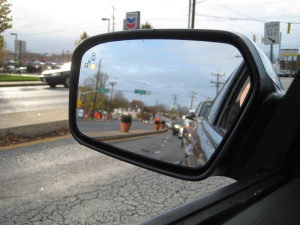
Lots of things cause car accidents. Automakers have been adding safety features to their cars, to lessen or prevent accidents, for decades. Countless lives have been saved over the decades since seat belts were implemented and later on with air bags.
In the last decade, as computers have gotten faster and smaller, manufacturers have been able to cram more and more silicon-based safety features into their cars. Among these are the heads-up display, available on several higher-end cars, which gives the driver pertinent information without having to divert their attention from the view ahead; front and rear parking sensors, sometimes bundled with backup cameras, which give the driver audible (and in the case of the cameras, visual) feedback as to how close their car is to other objects; adaptive cruise control, which uses radar to sense how close your car is to the one in front of it, and slow the car.
One of the newest safety features to hit the market is one which gives the driver audible and visual warning of cars in his or her blind spots or driving by behind them. The system works by using sensors built into the rear quarter panels of the car, picking up the presence of cars where the driver may not be able to see them. This works especially well at dusk or at night, when other drivers may not have their headlights on, or their cars blend in to your surroundings.
I recently had the chance to examine this set of features in the 2010 Ford Fusion Hybrid, where it’s called “BLIS with Cross-Traffic Alert.” An amber light built into each side-view mirror notifies you when a car is behind and next to you, where depending on your mirror placement, may not be visible. In my experience, the system worked well, showing me accurately when cars were hidden in my blind spots. To further “blind” myself, I moved the side-view mirrors so they mostly showed the sides of the Fusion I was driving, instead of the road to my sides, and the system worked very well. While a driver should not rely completely on the BLIS system, it is definitely a help, especially when changing lanes around large vehicles, when your attention could be diverted by pedestians.
The Cross Traffic Alert feature comes in handy for anyone backing out of a parking spot, as the system gives a warning chime when there are cars you can’t see coming along behind you. These two systems work by using radar sensors built into the rear quarter panels of the car which check for objects in their range, which is up to 3 car widths away.
In all, these two safety features should prevent some of the accidents involving unsafe lane changes and parking lot fender benders, which will be a boon to drivers and insurance companies, but should not be a substitute for careful driving. Body shops, however, may not be so happy about it, if it becomes a popular option for a wide range of vehicles.
